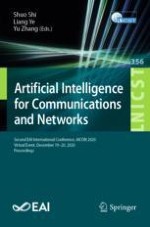2021 | Book
Artificial Intelligence for Communications and Networks
Second EAI International Conference, AICON 2020, Virtual Event, December 19-20, 2020, Proceedings
Editors: Shuo Shi, Liang Ye, Yu Zhang
Publisher: Springer International Publishing
Book Series : Lecture Notes of the Institute for Computer Sciences, Social Informatics and Telecommunications Engineering
